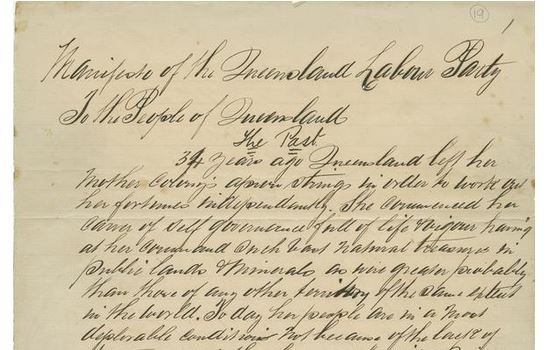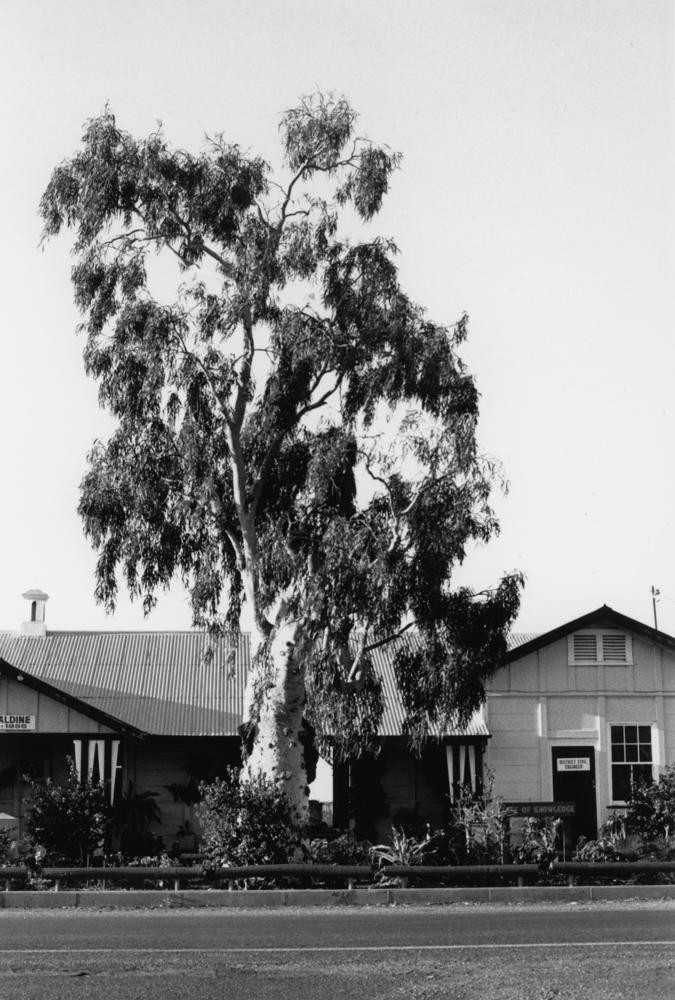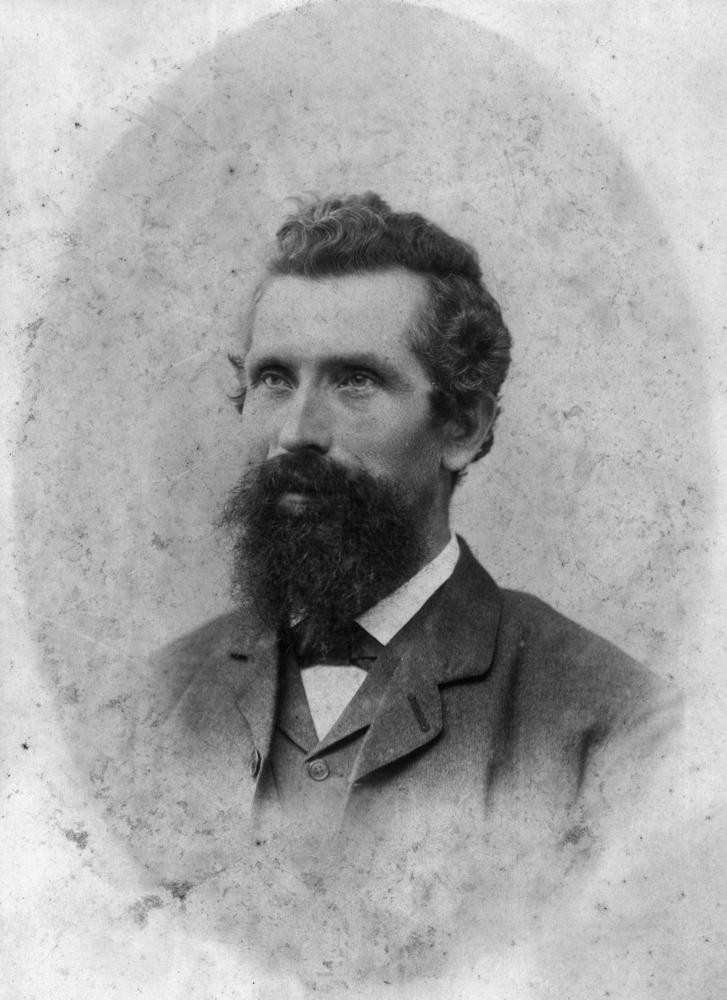The Manifesto of the Queensland Labour Party, dated 9 September 1892, can be regarded as one of the formative documents of the present day Australian Labor Party.

Manifesto of the Queensland Labour Party, 9 Sep 1892, OM69-18/16 - Papers of Charles Seymour. John Oxley Library, State Library of Queensland
The Manifesto was written at a time of political and social upheaval in Queensland, with the Labor movement looking for alternatives to industrial action to progress its aims. It provides a detailed coverage of the party’s grievances, with a focus upon the ruling class of the time, including squatters, employers, government and others. These were the social sectors that the party saw as opposing what was aspired to in terms of working benefits. Electoral and land reform as well as social equity are specific themes.
Manifesto of the Queensland Labour Party, 9 Sep 1892, OM69-18/16 - Papers of Charles Seymour. John Oxley Library, State Library of Queensland
According to Labor folklore, the Manifesto was read out under the well known Tree of Knowledge at Barcaldine following the Great Shearers' Strike. Barcaldine was at the centre of the industrial strife that was taking place in the early 1890s and was the centre point for contact and communication for the strikers, who were later to form the vanguard of the Labor movement. Whether or not this event occurred, the Manifesto stands as one of the planks upon which the Labor movement focused on the attainment of political power and parliamentary representation as a means of progressing the party’s aims and aspirations.

Tree of Knowledge on Oak Street Barcaldine 1989. John Oxley Library, State Library of Queensland. Neg 187352
Subsequently, Barcaldine has become known as the birthplace of the Labor Party in Queensland. The Manifesto was an important link in the chain of actions and events in Queensland that culminated in the formation of the first Labor government in the world. This was the short-lived Anderson Dawson Labor Government that came to power in 1899.
The Manifesto was written by Charles Seymour, who was heavily involved in the formative years of the Labor movement in Queensland. It was signed by the party’s president, Thomas Glassey, who was also the first person to be popularly elected on a Labor platform in Queensland.

Politician Thomas Glassey, 1889. John Oxley Library, State Library of Queensland. Neg 196004
The Manifesto is part of Charles Seymour Papers held by State Library of Queensland. "Charlie" Seymour had a long and militant service in the early stages of the Labor movement in Queensland. He was editor of The Worker from 1911 to 1915. In addition to the Manifesto, Seymour's Papers also include correspondence, cuttings, pamphlets, leaflets, photographs and documents relating to his activities in the Labor movement as well as to his work as editor of The Worker.
In 2009, the Manifesto of the Queensland Labour Party, having been identified by the International Advisory Committee and endorsed by the Director-General of UNESCO (United Nations Educational, Scientific and Cultural Organization) as corresponding to the criteria for world significance, was included on the Memory of the World Register. Inclusion on this prestigious list focuses attention on the world significance of the State Library’s collection and on Queensland’s remarkable history. One of only 5 other Australian entries, the Manifesto is now aligned with the likes of the Magna Carta and the Diaries of Anne Frank.
The Manifesto of the Queensland Labour Party has been digitised and can be viewed via our One Search catalogue.
Comments
Your email address will not be published.
We welcome relevant, respectful comments.